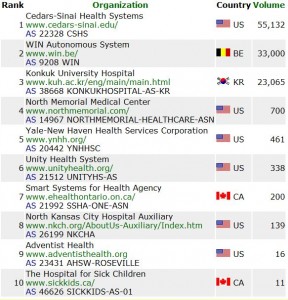Saturday I presented
Reputation as Public Policy for Internet Security
 at the 40th Telecommunications Research Policy Conference (TPRC)
hosted by George Mason University School of Law, Arlington, VA.
Attendees seemed to appreciate our efforts to deal with
heteroskedasticity with a wild cluster bootstrap-t procedure.
The presentation, along with the abstract and the paper,
are available
from the SpamRankings.net website.
at the 40th Telecommunications Research Policy Conference (TPRC)
hosted by George Mason University School of Law, Arlington, VA.
Attendees seemed to appreciate our efforts to deal with
heteroskedasticity with a wild cluster bootstrap-t procedure.
The presentation, along with the abstract and the paper,
are available
from the SpamRankings.net website.
Blog readers will notice the TPRC presentation
excerpted
 Grum botnet is staging a comeback
and extended
Festi botnet infesting the world, July 2012
as well as making use of the
numerous medical posts,
while attempting to pull that and other material together
in aid of motivating and describing the intended field experiments
and their potential policy implications.
As Prof. Andrew B. Whinston said
to Network World a couple of months ago:
Grum botnet is staging a comeback
and extended
Festi botnet infesting the world, July 2012
as well as making use of the
numerous medical posts,
while attempting to pull that and other material together
in aid of motivating and describing the intended field experiments
and their potential policy implications.
As Prof. Andrew B. Whinston said
to Network World a couple of months ago:
We’re not trying to solve the spam issue. We’re trying to deal with the broader issue of whether companies should publicly report security issues.
-jsq


